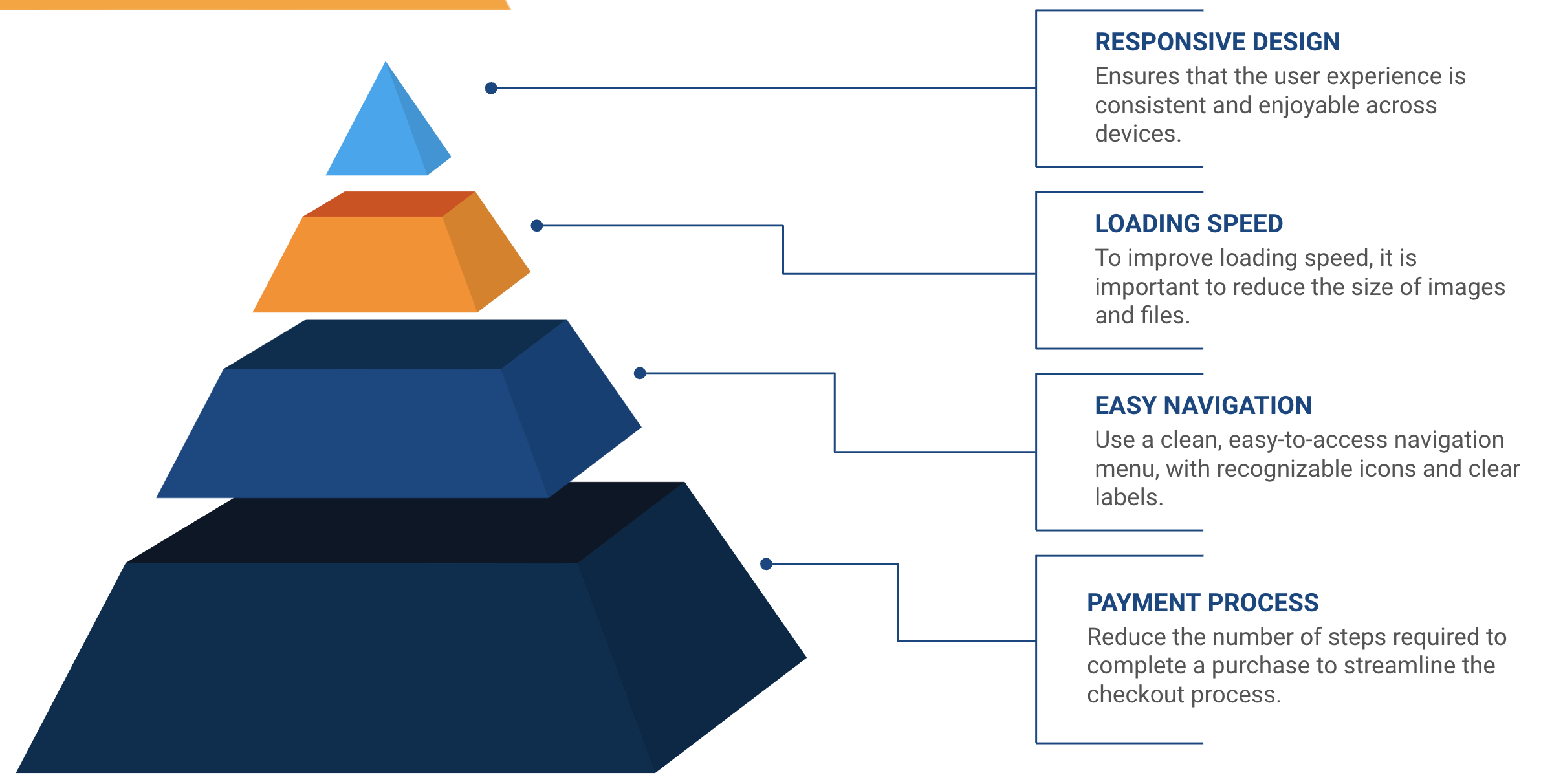
How to build an e-commerce that works well on mobile devices
September 28, 2021
Table of contents
Quick Access

Today, e-commerce has become a fundamental part of many people's daily lives. More and more consumers prefer to shop online due to its convenience and accessibility. And, as mobile devices continue to gain traction in the digital world, it is essential that online stores are optimized to function effectively on these devices.
In this article, we'll dive into how to build an e-commerce that works exceptionally well on mobile devices.
The importance of the mobile experience in an e-commerce
Mobile user experience is critical to the success of any online store today. Consumers expect to be able to navigate a website seamlessly and make purchases easily from their smartphones or tablets.
If an online store is not optimized for mobile devices, users may experience slow loading issues, difficulties in browsing and making purchases, which can lead to lost sales and customers.
Steps to build an efficient e-commerce on mobile devices
1. Responsive design
The first step to building an effective e-commerce on mobile devices is to adopt a responsive design. This means that the website automatically adapts to the screen size of the user's device, whether it is a smartphone, tablet or desktop computer. A responsive design ensures that the user experience is consistent and enjoyable across devices.

2. Loading speed optimization
Upload speed is crucial on mobile devices, where Internet connections can be slower than on desktop computers. To improve loading speed, it is important to reduce the size of images and files, minimize requests to the server, and use caching techniques. Speed testing tools, such as Google PageSpeed Insights, can help identify areas for improvement.
“On mobile, Internet connections are slower and the user is more impatient. To improve user experience and mitigate user frustration, you need to ensure your eCommerce site loads quickly. You should also confirm that your content is relevant and easily readable”, they explained in an article by Neil Patel.

3. Intuitive design and easy navigation
Navigation on a mobile website should be intuitive and simple. Use a clean, easy-to-access navigation menu, with recognizable icons and clear labels. Organize products into logical categories and make sure buy buttons are visible and accessible at all times. Simplicity is key to a successful mobile experience.
“The user experience on a mobile-optimized e-commerce site should not be the same as the experience on a regular website. Your mobile page should be lighter, faster and more intuitive. There are different design elements you can add to make it easier for the viewer to explore your products. For example, use a top navigation menu to improve your UX and make it easier for customers to find what they're looking for. Offer a search box in addition to a menu option, since some users know exactly what they want and others may be exploring,” they detailed in an article from the US Chamber of Commerce.
4. Optimization of forms and payment process
Forms on a mobile e-commerce website should be as concise as possible. Request only the information you need and use options like address autocomplete to simplify data entry. Additionally, the checkout process should be fast and efficient, with mobile payment options like Apple Pay and Google Wallet to make transactions even easier.
“A long and complicated checkout process can lead to cart abandonment on mobile devices. Reduce the number of steps required to execute a purchase to streamline the payment process (...) Offer multiple payment options, including digital wallets and mobile payment methods, to meet the preferences of your mobile users”, they noted in a LinkedIn article.
5. Tests and more tests
Before launching your mobile e-commerce website, conduct extensive testing on a variety of mobile devices and browsers. This will help you identify and fix compatibility issues and ensure your online store runs smoothly on all platforms.

6. Optimization for mobile SEO
Mobile SEO is crucial to driving traffic to your e-commerce from mobile devices. Make sure your site is optimized for relevant keywords and adheres to mobile SEO best practices, such as optimizing loading speed and creating mobile-friendly content.
7. Social media and mobile marketing integration
Take advantage of social media and mobile marketing to reach your audience on mobile devices. Share content on social media and make sure sharing buttons are available on your website. You may also consider implementing mobile marketing strategies, such as text message campaigns or push notifications.
In an increasingly mobile world, building an e-commerce that works well on mobile devices is essential to the long-term success of your online business. User experience, loading speed, intuitive design and mobile optimization are key elements to achieve this.
Additionally, constantly adapting to emerging mobile trends and technologies will ensure that your online store remains relevant and competitive in the future. By focusing on mobile user satisfaction, your e-commerce will be well positioned to thrive in the ever-evolving e-commerce market.
Do you need an expert team in e-commerce development designed for mobile devices? At Rootstack, we have +12 years of experience supporting companies in the development of cutting-edge digital solutions. Contact us.
We recommend you this video
Related Blogs
-6.45.03-p.m.png)
Migrating to Oracle Cloud: Strategies and Considerations
-9.01.17-a.m.png)
Nearshore development helps midsize companies grow
-9.01.17-a.m.png)
Methodologies used by IT staff augmentation companies
-9.01.17-a.m.png)
Hire a software development team in Colombia
-2.10.50-p.m.png)
What you gain by hiring a software provider in Panama
-3.57.25-p.m.png)

